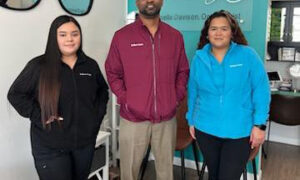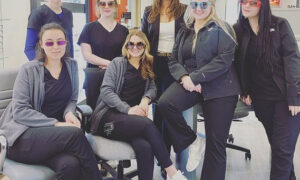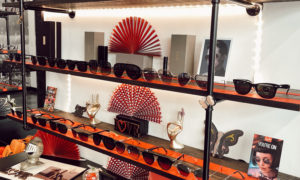
May 4, 2016
Exposure to UV rays and harmful blue light are both on the minds of Americans, but a large majority of people do not know these types of light share a source, according to a Transitions Optical, Inc., consumer survey conducted by Wakefield Research. When asked which types of light are harmful to the eyes long term, most people identify sunlight (76 percent agree), as well as light from digital screens like computers or smartphones (61 percent believe this). Only 4 percent of respondents, however, can correctly identify all common sources of blue light (digital devices and screens, fluorescent lights, incandescent light bulbs and the sun).
The sun is 100 to 500 times more intense than electronic devices and screens – and that’s a conservative number. Some feel that because the intensity of the sun is so strong, other sources are irrelevant.
Here are three points to consider:
The harm done to the human retina by high energy light is cumulative. Every source adds to the damage. It’s just not possible to avoid the sun entirely while living a normal life. Likewise, it’s not possible to avoid sources of damaging blue light indoors. We are surrounded by indoor sources of damaging blue light: plasma TV screens, computer screens, smart phones, tablets, LED lights, and compact fluorescent lights (CFL’s). They all add to the damage.
It’s not a choice between outdoor protective lenses or indoor protective lenses. Patients would be best served by both outdoor protective lenses and indoor protective lenses.
You don’t want to block all blue light all the time. There is good blue light and bad blue light. The band of light most harmful to the retinal pigment epithelial cells is 415-455 nm. That 40 nm band of light causes the maximal cell death. It would be good to block this band of blue light. On the other hand, blue-turquoise light in the band from 465 – 495 nm is essential to the function of the human pupillary reflex, helps regulate the Circadian sleep/wake cycle, and has been implicated in memory, mood and hormonal balance. It would be good to let this band of blue light pass through unblocked.
The good news is that we have many tools available. Here is a partial list of those tools:
• Hats with a brim
• Setting controls on digital devices to eliminate or reduce blue light
• Lenses that reflect harmful rays
• Lenses that absorb harmful rays
• Protective lenses without color distortion
• Photochromic lenses with adaptable absorption
• Nutraceuticals
A workable approach to manage the potential damage from high energy blue light is to create two levels of care: blue light protection and blue light lock-down. A patient who spends most of their time indoors away from the sun, and is very healthy with no risky lifestyle choices, may only need blue light protection. A patient with macular degeneration, or a direct family member of a patient with macular degeneration, may benefit from blue light lock-down.
Take this week to review how you manage blue light in your practice.



























